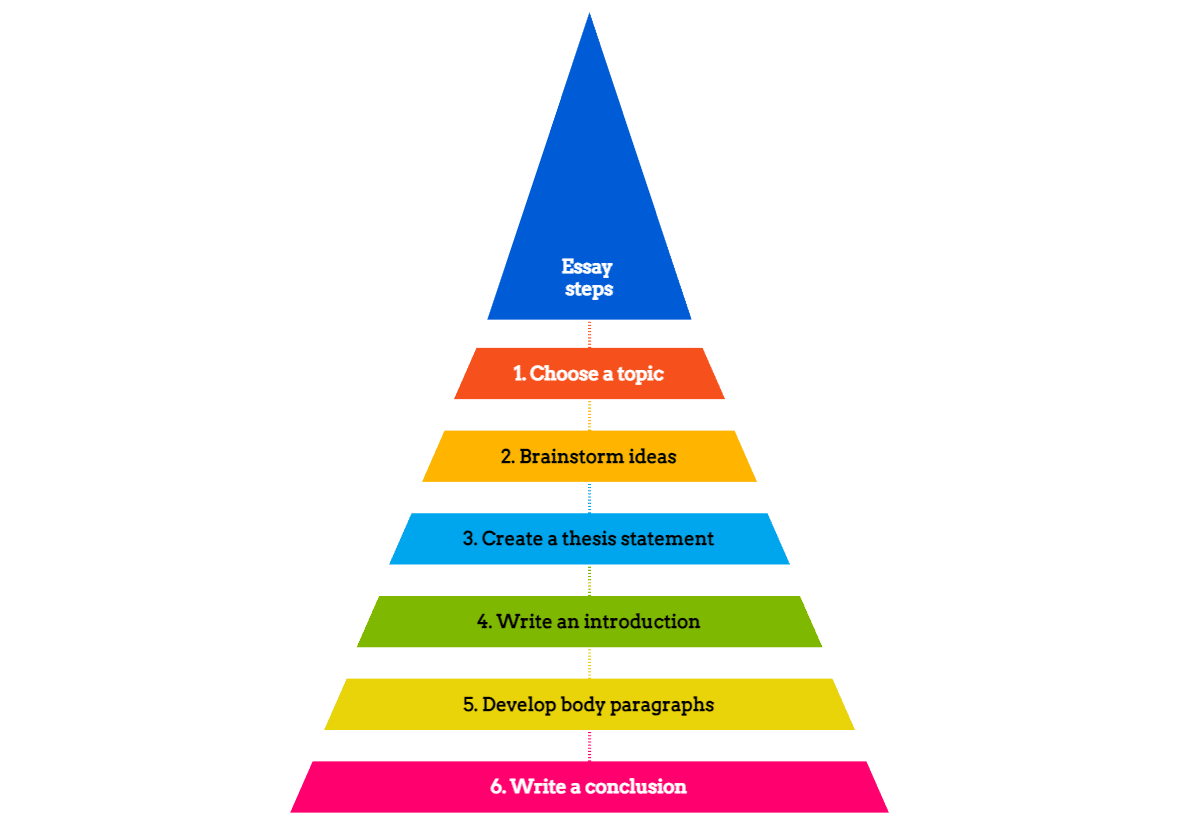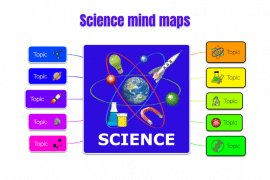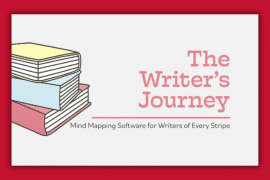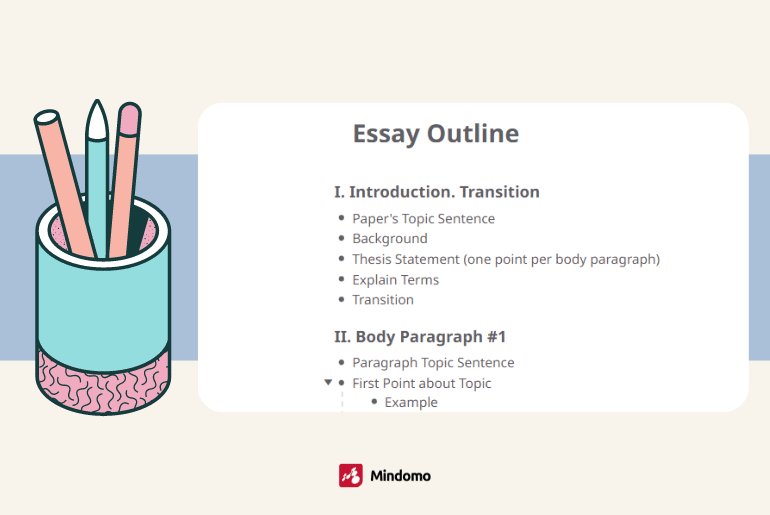
You have likely been told that to write a good essay, you must come up with a clear thesis and an outline of your supporting points (in case you want to learn more about what is an outline, click here). These are important steps in writing an essay but don’t necessarily have to be done in that order.
Many writers find that starting with the essay’s body and working backward helps them organize their thoughts more effectively. Learn how to write your essay by reading this article. This article will not only teach you how to make an outline for an essay but will cover the complete writing process for your essay step by step.
Steps on how to create an outline for an essay
If you’re unsure how to write your outline for the essay, keep reading this article!
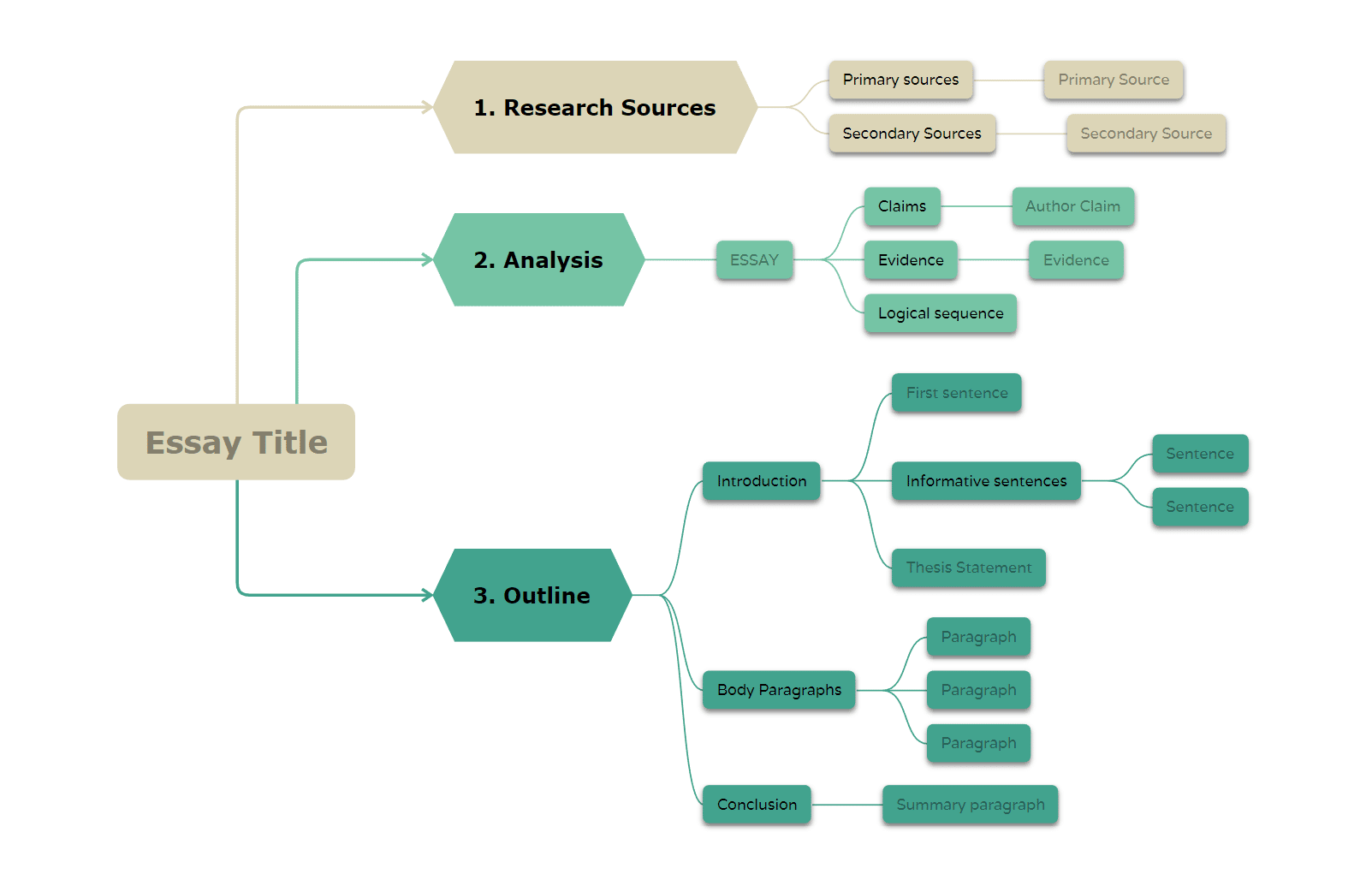
1. Choose a topic
When you sit down to write an essay, you will likely find that you need a topic. A good place to start is by considering one of the many different types of essays out there. Once you have chosen a type, it is time to determine your thesis statement.
This is the main point or argument that you want to make in your essay. It should be clear and concise, and it should be something that can be supported with evidence. After you have a thesis statement, you can create an outline for your essay.
Write your outline to organize your thoughts and ideas and ensure that your essay flows smoothly from beginning to end.
There are several ways to write your outline for the essay, but the most common is the decimal outline. This type of outline uses numbers and decimal points to organize information.
The first level of your outline should be numbered with a 1., and each subsequent level should be numbered accordingly. For example, if you have three main points that you want to make in your essay, they would each be given a number followed by a decimal point. Your first point might look like this:
- Thesis statement
If you have sub-points that you want to include under each main point, you can add another decimal point after the number. For example, if you wanted to include two sub-points under your first main point, they would look like this:
- 1. Thesis statement.
- 1.1 Sub-point A.
- 1.2 Sub-point B.
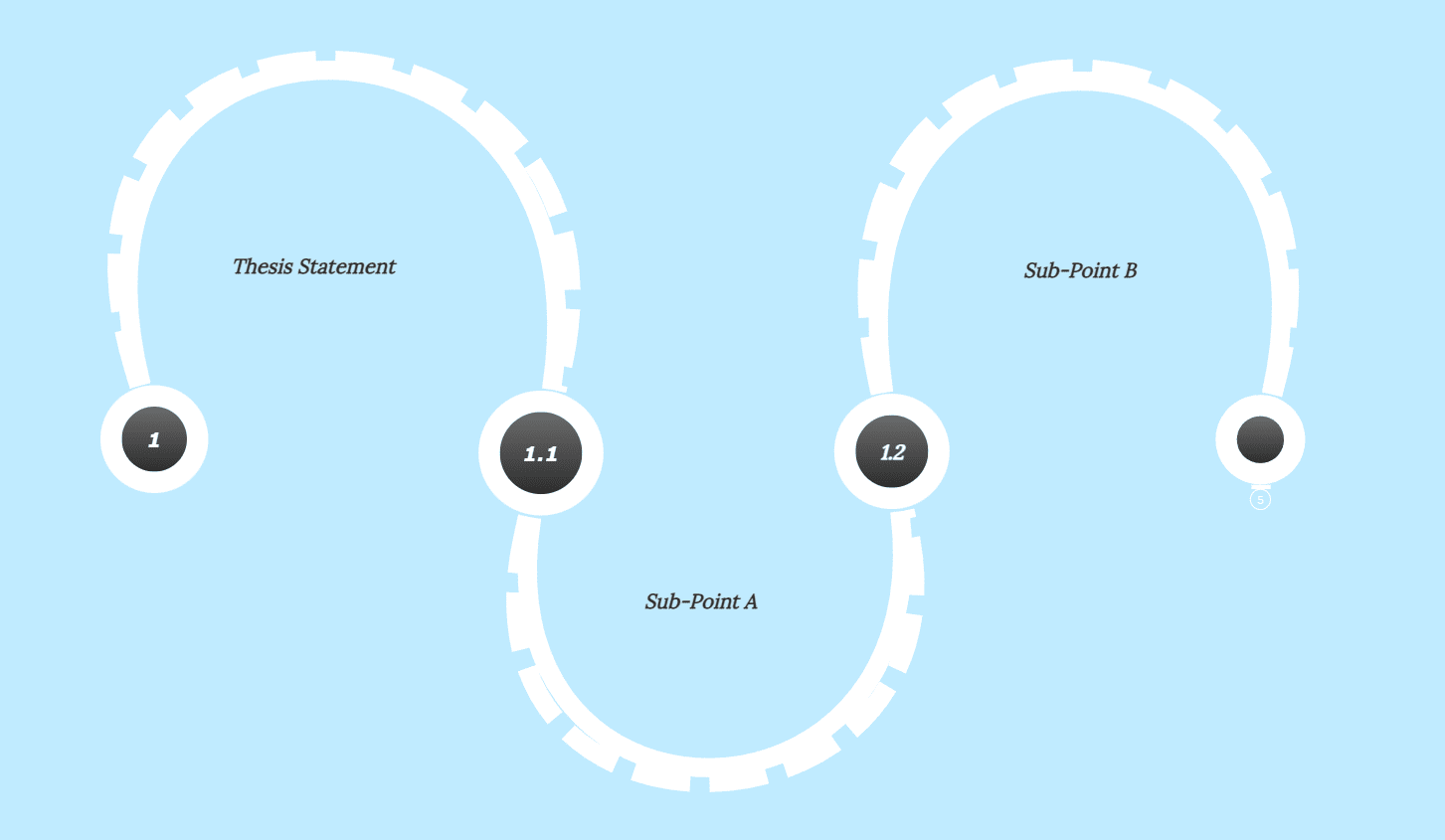
As you can see, the decimal outline is a flexible and easy way to organize your thoughts and ideas. Once you have your outline, you can start writing your essay.
2. Brainstorm ideas
There’s no one perfect way to brainstorm ideas for your essay. However, some methods may work better for you than others. Here are a few brainstorming techniques that you might find helpful and which will eventually help you to write your outline for the essay:
- Freewriting: Set a timer for 5-10 minutes and start writing about your topic without stopping. Don’t worry about grammar or structure; just let your thoughts flow. Once the timer goes off, you can go back and revise your free write if you want.
- Listing: List all the ideas that come to mind when you think about your essay topic. Once you have a long list, narrow it down to the 3-5 most promising ideas and develop them further.
- Mapping: Draw a mind map diagram or spider diagram with your essay topic at the center. Then, branch out from the center with related ideas. This is the most efficient way to organize your thoughts visually and generate new ideas faster.
- Questioning: Ask yourself questions about your topic and answer them. This can help you generate new ideas or think of different angles to approach your topic.
Once you’ve brainstormed some ideas, it’s time to start writing an essay outline for your essay. An outline will help you structure your thoughts and organize them in a logical order. Not sure how to get started? Check out our guide on how to write an essay outline.
With a solid outline, writing your essay will be a breeze. Follow your outline and fill in the details with supporting evidence and explanations. Before you know it, you’ll have a finished essay! The writing process for the essay can be broken down into the following steps and is started by creating a thesis statement.
3. Create a thesis statement
Creating a thesis statement for your essay is the first step in writing your outline. By writing a thesis statement, you can communicate the main idea of your essay to your reader.
A thesis statement should be one sentence long and placed at the end of your introduction paragraph. To write a successful thesis statement, you will need to know the following:
- The main idea of your essay.
- The three points you will make in your essay support your main idea.
With this information, you can then begin to craft your thesis statement. For example, if your essay is about the benefits of exercise, your thesis statement might look like this:
Exercise has numerous benefits, including weight loss, improved mental health, and increased energy levels. Now that you have your thesis statement, you can begin writing your outline and essay.
4. Write an introduction
Your introduction should start with a hook that grabs the reader’s attention and makes them want to read more. You can use a surprising fact, a thoughtful question, or a relevant quotation to achieve this.
Next, give background information on your topic, so the reader knows what you’ll be discussing. Finally, end your introduction with your thesis statement, which should state your main argument in one or two sentences.
Remember that your introduction should be brief and to the point; you don’t need to include everything you know about your topic. Just hit the highlights and leave out any unnecessary details. Your goal is to pique the reader’s interest and get them excited for what’s to come.
If you’re having trouble getting started, try brainstorming a list of potential hooks or checking out some example essays to get an idea of a good introduction. You can easily write an engaging and effective introduction with a little effort!
5. Develop body paragraphs
Body paragraphs are where you develop your ideas in detail. A well-developed paragraph has at least five to eight sentences.
Paragraphs are developed with supporting details like explanations, examples, and statistics. The best way to remember how to develop your body paragraphs is to think about how you would explain your ideas to someone who was asking for more information.
There are a few things to keep in mind when writing body paragraphs:
- Start with a topic sentence that introduces the paragraph’s main idea.
- Support the topic sentence with evidence or examples.
- Explain how the evidence or example supports the main idea.
- Conclude the paragraph by reinforcing the main idea or introducing the next one.
6. Write a conclusion
A conclusion is the last paragraph of your essay; if you’re writing a really long essay, you might need 2 or 3 paragraphs to conclude. A conclusion typically does one of two things—or, of course, it can do both:
- Summarizes what you’ve already said.
- Makes a final point about the issue you’ve been discussing.
- Each section of your essay should be free of errors. Make sure you don’t use lowercase letters at the beginning of your paragraphs or after you have written full sentences.
For example, in a short essay (less than 1000 words), there is not much room to give a full and detailed account of your main points. Instead, you might want to briefly restate the main points of your argument in your concluding paragraph and leave it at that.
If so, be sure that your conclusion is not a mere repetition of what you have already said. Don’t simply restate your thesis statement, as that would be redundant. Instead, focus on the key points you want your reader to remember from your essay.
If you are writing a longer essay, you can afford to be more detailed in your concluding comments. In a longer essay, you might want to summarize each main point and how it contributed to proving your thesis.
You might also want to remind the reader of the most important implications of your argument. For example, if you were arguing for stricter gun control laws, you might conclude by saying something like this:
While we may never know how many lives could be saved by stricter gun control laws, we know that the current gun laws in America are not working. Every day, innocent people are killed in shootings, and our government does nothing to prevent it. It’s time for a change. It’s time for stricter gun control laws.
This conclusion makes a final, powerful point about the issue at hand and leaves the reader with something to think about.
Types of essay
If you are having trouble facing what essay type you need to follow? Let us discuss the types of essays you can encounter in your academic journey. These are as follows.
Argumentative essay
In an argumentative essay, the writer takes a position on a topic and argues for that position. The purpose of the argumentative essay is to convince the reader to agree with the writer’s point of view. To do this, the writer must present evidence and examples to support their position.
Narrative essay
A narrative essay tells a story from the writer’s perspective. The purpose of the narrative essay is to entertain the reader while also informing them about a particular subject. To do this, the writer must use descriptive language to paint a picture in the reader’s mind.
Expository essay
An expository essay is designed to be informative and explain something to the reader. An expository essay is not intended to persuade or argue for a particular point of view. To do this, the writer must use facts and data to support their claims.
Persuasive essay
A persuasive essay is similar to an argumentative one in that it takes a position on a topic and argues for it.
However, the goal of a persuasive essay is not only to convince the reader to agree with the writer’s point of view but also to take action on that issue. To do this, the writer must use strong evidence and persuasive language. When it comes to persuading the reader to act on a particular issue, persuasive essays are the best essay type to be used.
Bonus: Research paper
A research paper is an in-depth study of a particular subject. The purpose of the research paper is to collect data and information about the chosen subject and present it clearly and concisely. To do this, the writer must use primary and secondary sources to support their claims.
Conclusion
There are many different types of essays that you can encounter in your academic journey. Each type of essay has a different purpose and requires a different approach. However, all essays share elements, such as an introduction, body paragraphs, and a conclusion. By understanding these basic components, you can write any essay.
Mindomo is a great outline software you can use for your essays. Try it today and create your outlines easily and fast.
Keep it smart, simple, and creative!
The Mindomo team

